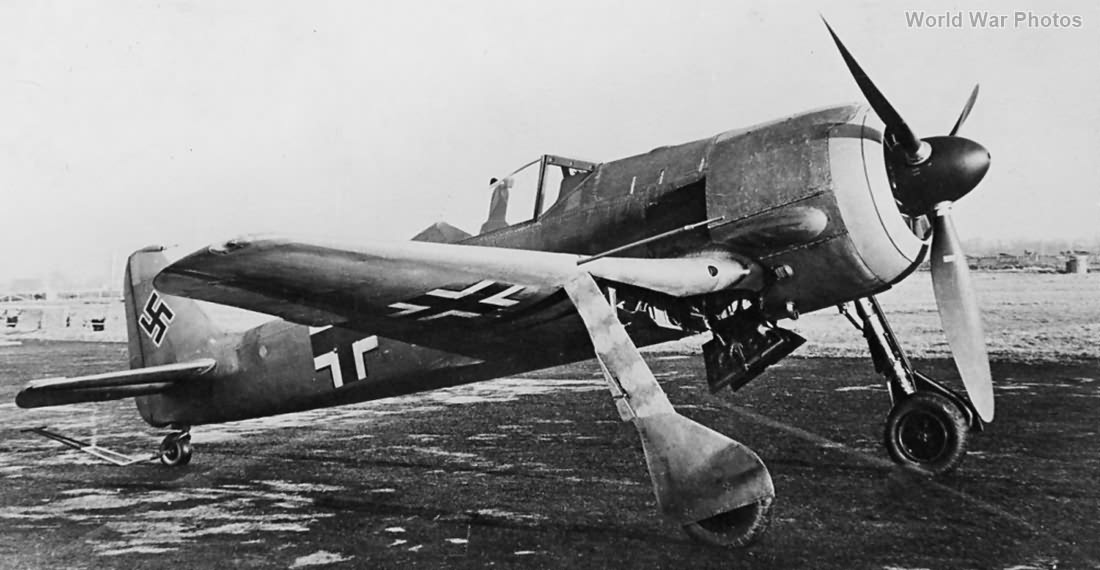While waiting for the BMW 801 engine tests to be completed, the Focke-Wulf engineers undertook a comprehensive reworking of the Fw 190 design. This included reinforcing various structural components and incorporating feedback from earlier test flights. Notably, engineers von Faehlmann and Mittelhuber repositioned the pilot’s seat further aft. This change was necessary due to the weight of the BMW 801 engine and was expected to reduce cockpit heat, improve space for armament installation, and provide additional protection with armor plating. However, moving the seat back also reduced visibility during taxiing. The canopy design was refined for better integration with the fuselage, and the leading edges of the wings were moved forward slightly to create additional space for weapons.
Other modifications included changes to the landing gear and wheel covers, with the lower section of the wheel covers relocated from the landing gear to the fuselage underside. The tailwheel was also enlarged and equipped with a pneumatic tire. Despite these numerous adjustments, the fuselage length increased only slightly by 0.10 meters, but the aircraft’s weight without armament rose to 3125 kg. This increased weight resulted in reduced climb performance and maneuverability.
To address the performance issues, Blaser developed a new wing design with a slightly larger span and area. This was prompted by the Fw 190’s inability to turn as tightly as the twin-engined Bf 110 during a comparative flyoff. The initial V5k (Werknummer 0005) configuration retained the short-span wings of the V1 and V2 and first flew in August 1940. However, this configuration suffered a mishap when an engine cover over the guns came loose, forcing pilot Hans Sander to abort the flight. The aircraft also sustained damage from colliding with a tractor during taxiing.
The subsequent V5g variant featured the new, larger wing design with a span of 10.50 meters and an increased wing area of 18.30 m², compared to the original 9.56 meters span and 15.00 m² area. Powered by the pre-production BMW 801C-0 engine, which produced 1147 kW (1560 hp), the V5g proved to be more maneuverable and had a better climb rate than the V5k, despite being only marginally slower by about 10 km/h. This led to the misconception that two separate V5 prototypes existed, but records confirm there was only one V5 prototype (Werknummer 0005), along with the V6 (0006), which served as the only prototypes for the A-0 series. The V5 was ultimately damaged beyond repair in an incident on September 9, 1940, when it flipped over.
